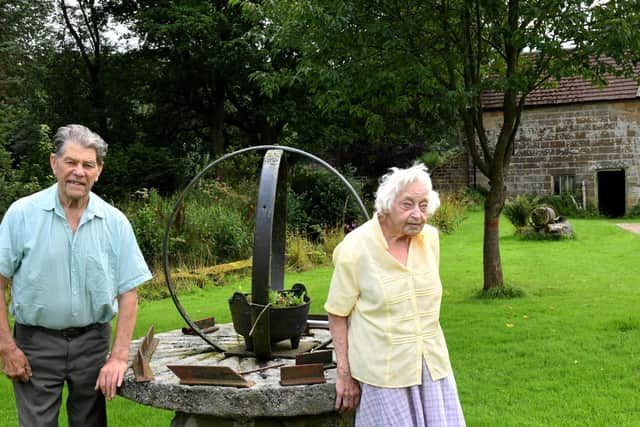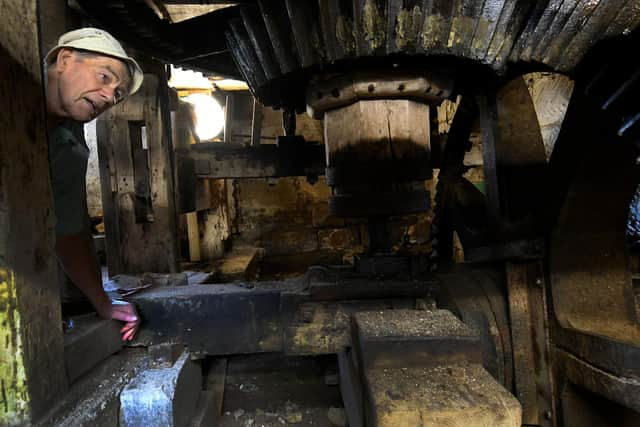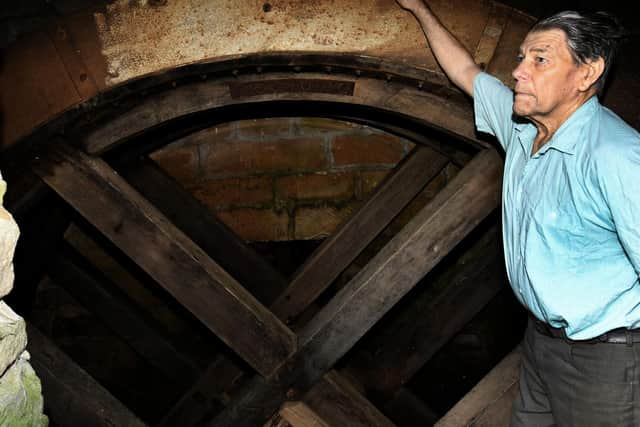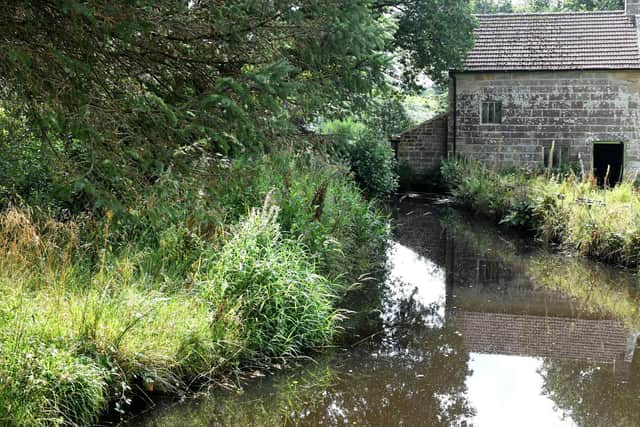Meet the 89-year-old couple who keep the wheels turning at one of Yorkshire's last working water mills
Low Mill stands in an idyllic location near Chop Gate, North Yorkshire, fed by a channel from the River Seph, which Mr Harrison believes was dug by the monks of Rievaulx Abbey 800 years ago.
A new local history book celebrates the centuries-old mill, which has been painstakingly restored twice in the last 60 years.
Advertisement
Hide AdAdvertisement
Hide AdAs well as explaining the complexities of how the mill works, the book tells its history from the earliest days through to the early 20th century when it became uneconomic to run as farmers could buy in corn more cheaply than grow it locally.


When Mrs Harrison married her first husband, the late Ted Garbutt, and moved to Low Mill in 1960 the mill had been disused for many years and the water wheel was in pieces.
It was repaired in the 1970s, with sixth form students from Middlebrough coming to lend a hand.
By 1980 it was working again and used to grind corn and beans with an external drive to saw wood.
Advertisement
Hide AdAdvertisement
Hide AdBut an accident while Mr Garbutt was sawing wood led to the wedges holding the wheel in place break loose and float off down the river, with the main axle breaking.


Mr Harrison got involved with the mill, after retiring in 1995 and starting to help out with the extensive gardens.
Work repairing the mill began in 2002, four years after Mr Garbutt's death, a massive job as it involved installing a new main axle made from a huge chunk of oak with lignum vitae bearings.
Mr Harrison got fascinated by mills after visiting one at Easington in County Durham as a boy, which has since been converted into a house: "When I came here it was derelict and I couldn't find anyone who knew anything about it.
Advertisement
Hide AdAdvertisement
Hide Ad"All the people who knew anything were in the graveyard. Hazel wanted to see it running again as Hazel and her husband had spent a lot of time and effort to get it going.


"It took me three years to find a piece of oak big enough for the shaft - it weighs a metric tonne."
The mill, which was extended in 1785, has two stones - French burrs for wholemeal flour and Derbyshire grit for barley - but hasn't ground corn for years. Mr Harrison thinks it is unlikely it will in the future.
He said: "If we were to grind flour, the powers that be wouldn't let us sell it - we couldn't get it clean enough. Next August I'll be 90 and Hazel is 90 before that. How much longer we can keep going I don't know. But we will keep doing bits as we can."
Advertisement
Hide AdAdvertisement
Hide AdMrs Harrison, who years ago used the mill to grind barley for feed for the animals and make her own bread from the flour, said: "I'm hoping everything will keep going. There aren't many people who know much about them - we were years before we found somebody. So few people have the knowledge."


There is no recorded documentary evidence about the mill until around the time of the Dissolution of the Monasteries, when a miller's name appears in a list of tenants from 1538.
But the new local history book says the mill is most likely to have been built centuries earlier, in the late 12th century, when the monks at Rievaulx were developing Bilsdale for agriculture through a system of monastic granges or farms.
Co-author Malcolm Bowes said: "A huge amount of agricultural improvement and the development of the granges took place in the 12th century. It seems obvious that if you are introducing that scale of population into the Dale, which is so isolated, it seems obvious you would build a mill at the same time."
Advertisement
Hide AdAdvertisement
Hide AdLow Mill in Bilsdale: The life of an 800-year-old water mill by Malcolm Bowes and Jane and Reed Gamble of the Bilsdale Local History Group is priced £6. Visit bilsdale.org.uk and use the contacts section.
-----------------
Support The Yorkshire Post and become a subscriber today.
Your subscription will help us to continue to bring quality news to the people of Yorkshire. In return, you'll see fewer ads on site, get free access to our app and receive exclusive members-only offers.
So, please - if you can - pay for our work. Just £5 per month is the starting point. If you think that which we are trying to achieve is worth more, you can pay us what you think we are worth. By doing so, you will be investing in something that is becoming increasingly rare. Independent journalism that cares less about right and left and more about right and wrong. Journalism you can trust.
Thank you
James Mitchinson
Comment Guidelines
National World encourages reader discussion on our stories. User feedback, insights and back-and-forth exchanges add a rich layer of context to reporting. Please review our Community Guidelines before commenting.